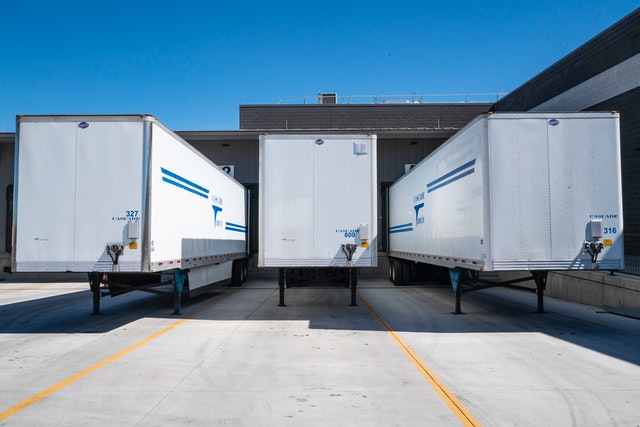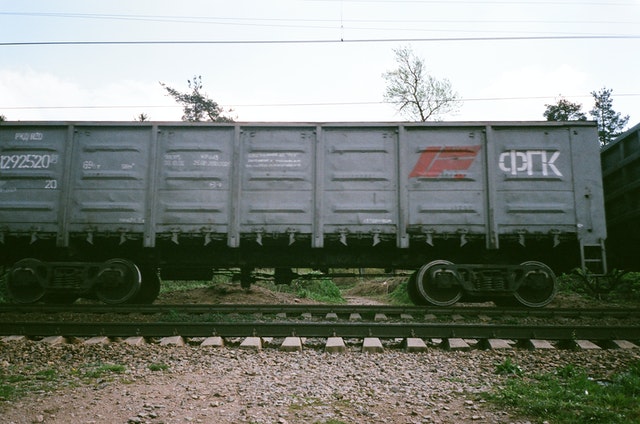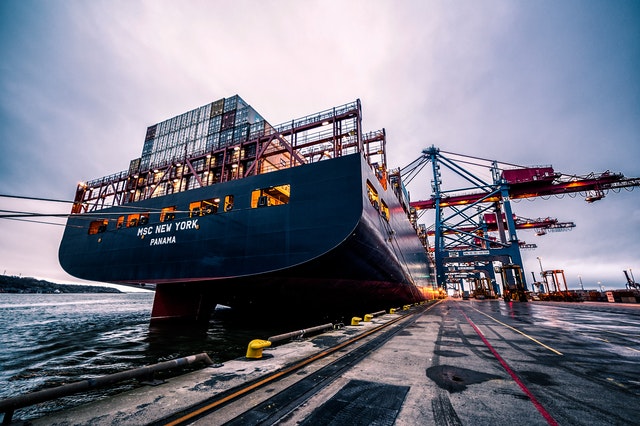Utah has long been known for many things: great skiing, the salt flats, and five national parks, but it has also held a place in the history of this nation as the Crossroads to the West.
This moniker was gained during Western expansion, the Gold Rush, the building of the Transcontinental Railroad, and the stringing of the telegraph line. Because of the state’s location, it held onto the honor of being the Crossroads to the West again when the government built the Interstate Freeway System.
Unassuming, slightly odd Utah has been at the forefront of many of the great innovations and expansions that have helped the country move forward and become connected. And it remains so today.
Shipping: Salt Lake City

Even though it is 800 miles from the sea, Utah has always been a natural shipping spot. Salt Lake City is in a prime spot to handle distribution demands. It has an international airport close to the center of the city that serves both FedEx and UPS, with each having a fleet of planes ready to take goods all over the country and internationally as well.
Salt Lake City is also connected to two major Interstates. I-80, the Interstate just next to downtown Salt Lake, and I-15, which comes in from the north end of the state, through Davis County, then heads straight south through the Salt Lake Valley, on through Utah County, and exits the state on the Southwest corner. Having two major interstates means trucks can get cargo loaded and distributed quickly.
Why Utah Lowers Your Shipping Cost
Positioning inventory in Salt Lake City reduces the number of high-zone shipments to Western customers while keeping competitive reach across the central and eastern U.S. This location helps brands avoid the coastal premium on facility costs and leverages both parcel and LTL options efficiently. For many ecommerce programs, Utah functions as a West Coast fulfillment center alternative that maintains speed without the congestion and fees of port-adjacent markets.
Utah Railway

Not only does having two major interstates available for quick access make Utah ideal for shipping and distribution, but there is also access to an extensive railway system.
Union Pacific boasts a 90-million-dollar, state-of-the-art facility that covers 240 acres. This hub handles 250,000 annual container lifts, serving the expanding regional market.
Currently, Utah is a great place for shipping and distribution; however, what makes it even more attractive is what’s coming in the future.
How Intermodal Works In Utah
Intermodal moves the sealed container between ship, rail, and truck without handling the freight inside. The Utah railway network and Salt Lake City rail ramps speed inland transfer from coastal ports, easing drayage bottlenecks and keeping replenishment steady. For ecommerce brands, that means more dependable inventory flow and fewer stockout risks during peak demand.
Ecommerce Fulfillment In Utah
Our Salt Lake City fulfillment operation supports fast, accurate outbound and flexible value-add work for DTC and B2B programs.
- Pick and pack with cartonization and rate-shopping
- Kitting, light assembly, and subscription box workflows
- Returns processing with inspection and restock rules
- FBA and marketplace prep
- Lot and expiry control for regulated items
- Serial capture and scan accuracy for high-value goods
- Custom packaging, inserts, and branded unboxing
If you need ecommerce order fulfillment in Utah with reliable West Coast reach, this is the place to start.
Utah vs Coastal West & Nevada
Speed without the coastal premium: SLC offers West Coast delivery speed with lower facility and labor exposure than many port-adjacent metros.
Less Congestion Risk
Fewer port-related slowdowns and fewer fee shocks that can ripple through parcel and LTL networks.
Balanced Nationwide Reach
Strong West and Mountain coverage with competitive times into the Midwest and East.
Operational Flexibility
Utah’s interstates, airport, and rail access give Salt Lake City fulfillment a resilient pathway during peak and disruption.
If shipping from Salt Lake City is on your roadmap, Utah often beats coastal costs while preserving speed.
The Utah Inland Port
With its access to interstates and the international airport, Utah, in particular, Salt Lake City, has already proven to many businesses that it is a great place for distribution and shipping. But now, that’s about to get even better when the proposed Inland Port is built.

Why An Inland Port
Since 1980, global trade has increased 600%. This flood of trade directly affects the front of the supply chain, which is seaports. With the rise of e-commerce and giants like Amazon, there is now enormous pressure on the other side of the supply chain, which are the local distribution hubs.
As the amount of cargo coming into seaports grows, they fail to keep up with the increased volume, which causes increased congestion on already packed-to-capacity ports. This congestion means it now takes longer to turn a container. Ports are experiencing bottlenecks, increased fees, and the ever-dreaded shipping delays.
The fees and the delays, along with congestion, translate to dollars lost by manufacturers, and so there is an urgency to move cargo away from seaports and into distribution sites quickly. Enter Utah and its Inland port.
How The SLC Inland Port Works For Brands
Inland ports, like the one currently in process in Utah, facilitate getting cargo off the docks, out of the gridlock, and into distribution centers in a more efficient manner. The faster containers can be moved and loaded onto a train or truck, the faster more containers can be loaded on the docks.
More cargo moving out quicker means more cargo moving in quicker, which ultimately means more money.
Beyond Shipping: Jobs, Growth & Lower Costs
An inland port is great for shipping and distribution. Currently, ports in Houston, Chicago, Kansas City, Fort Worth, St. Louis, Atlanta, Memphis, Columbia (SC), Charlotte (NC), and California’s Inland Empire, function as hubs designed to move international shipments more efficiently and effectively from maritime ports inland for distribution elsewhere.
Inland ports also boost business around themselves and open opportunities for business growth. An inland port offers companies the opportunity to bypass the congested and expensive deepwater seaports. Get their goods distributed more quickly and efficiently.
Inland ports also offer more job opportunities within the supply chain business, as well as creating opportunities for satellite businesses around the port.
Companies that are currently working in supply chain management in Utah that are doing well will see their work expand and profits go up with the addition of the inland port.
The port will also bring in more business, create more opportunities, and increase awareness of the benefits the state of Utah has to offer.
Need East Coast Speed Too
Pairing Utah with an East Coast node can achieve 1–2-day coverage for the majority of U.S. households while keeping Western and Central demand anchored in SLC. We can design a two-node strategy that balances inventory, lowers average zones, and protects delivery times during peak. If you already operate an East Coast ecommerce fulfillment center, Utah is a natural complement.
What’s Next: Utah As A Global Fulfillment Gateway
What’s next is a question that is constantly being asked in business. What’s the next big thing? What’s the next must-have? The same question is being asked in shipping and distribution. What’s next? What’s the answer to crowded seaports? How do we handle the rise in e-commerce? How do we get goods to a public that demands delivery at the speed of a click?
What’s next is an inland port in Utah. Inland ports have proven themselves to be viable economic boosters all over the country. The need for quicker, more accurate distribution isn’t going to suddenly dry up and blow away. The pandemic has proven that. If anything, ecommerce and expedited delivery needs will only increase as time goes on.
Utah has already shown itself to be a prime spot for shipping and distribution, and that is only going to get better once the inland port is complete. Access to railroads and highways that already exist will increase. Quicker turn around will be possible. And Utah is shaping up to be a major hub for international business.
In the very near future, Utah, the Crossroads to the West, will most certainly become the Crossroads to the World.
Utah Fulfillment FAQs
Is Utah a good location for ecommerce fulfillment?
Yes. Utah offers fast ground reach to the West and competitive times to the Midwest and East, with direct access to I-15, I-80, SLC International Airport, and intermodal rail.
How fast can I ship from Salt Lake City to the coasts?
Typical ground ranges are 1–2 business days to the West Coast, 2–3 to much of the Midwest, and 3–4 to most of the Northeast. These are typical estimates, not guaranteed service levels.
What is an inland port and how does it help?
An inland port is a logistics hub that moves containers off congested seaports to inland rail and truck networks. It improves container flow, replenishment reliability, and overall throughput for shippers.
Do you handle returns, kitting, and special projects?
Yes. We support returns processing, kitting and light assembly, FBA and marketplace prep, lot and expiry control, serial capture, and custom packaging.
Can Utah work with an East Coast order fulfillment node?
Yes. A two-node strategy with Utah and an East Coast site can lower average zones and improve 1–2-day reach for most households.




